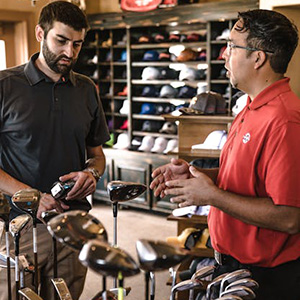If you’re tired of sales books that shout “Be confident!” without ever showing you how, you’re not alone. In a world full of fluff and empty buzzwords, How to Sell Anything to Anybody by Joe Girard cuts through the noise. This isn’t theory—it’s the proven playbook of a man who sold over 13,000 cars in just 15 years, earning him a Guinness World Record and the title of “Greatest Salesman of All Time.” So, if you want to discover the secrets to selling without the hype, this book is for you. Here are some of the key ideas it shares.
Key Idea No. 1: Desire Outshines Talent

Most people assume that success is reserved for the most talented, the most charismatic, or the most knowledgeable. It’s easy to believe that the most skilled individual will always rise to the top, and that having the “right tools” is the deciding factor in any career or life transformation. But that’s not always how things play out in real life. In fact, sometimes the only thing you really need is desire—pure, burning, relentless desire.
The author’s story shows us something powerful. He didn’t start with confidence, charisma, or expertise. What he had was desperation—a raw, unyielding desire to succeed. When his building business failed and he was left broke, Girard didn’t wait for the “perfect” moment to act. Instead, he leaned into his weakness and turned it into an advantage.
For years, he’d struggled with a stutter that started when he was a kid. Instead, he took that weakness and turned it into a strength. Because he stuttered, he had to slow down. He had to plan his words. He had to listen—really listen—before he spoke. Most salespeople speak quickly, often too quickly, in an attempt to impress or overpower their clients. But he took a different route. He made his weakness his edge. His careful, measured speech became a form of empathy. It made people feel heard. It made him more relatable. And in a business like sales, connection is everything.

Let’s be clear: Skills matter. But they’re not the starting line—they’re the fuel you add along the way. The problem is, many people wait for perfection before taking action. They think, “I need to learn more, read more books, or get a degree before I can even try.” This mindset creates a loop of inaction.
Desire, on the other hand, pushes you to act now, even if you’re not ready. It’s the fire that keeps you moving when skills are lacking. For example:
- A salesperson with no experience but a burning need to provide for their family will often outperform someone with all the training in the world.
- A writer who’s terrified of rejection but desperate to share their story might write more consistently than someone who “has time.”
Too often, people underestimate the power of pain. We try to avoid it, numb it, or pretend it doesn’t exist. But pain, when faced directly, can become one of the greatest sources of fuel. It sharpens focus. It clarifies priorities. It turns idle wishes into urgent missions.
The bottom line is success isn’t about being the best. It’s about wanting something so badly that you’re willing to do whatever it takes. Skill can be learned, but desire is what keeps you going when the road gets tough.
Key Idea No. 2: Beyond the ‘Mooch’
In the world of sales and customer interaction, many view their customers—either as valuable individuals or as obstacles. Unfortunately, too often, the lens through which customers are seen is distorted by frustration, past failures, and a culture that subtly encourages adversarial thinking.

One of the most toxic idea is the notion of the “mooch.” This label suggests that customers are simply there to take as much as they can—your time, discounts, attention—without giving anything meaningful in return. While this perception may feel justified in a high-pressure workday, it’s a gross oversimplification of a much more complex reality. When such beliefs take root, they breed cynicism. Sales professionals stop seeing their roles as service-oriented and begin approaching each interaction as a contest, where the goal is not mutual benefit but personal victory.
In this kind of environment, every question a customer asks is met with suspicion. Every hesitation is interpreted as a negotiation tactic. Every delay is seen as insincerity. The entire relationship becomes adversarial, feeding a cycle where both parties are on guard, waiting to be taken advantage of. This kind of tug-of-war dehumanizes the sales process and replaces empathy with ego.
But here’s the thing, customers aren’t trying to trick you. They’re just like you—they want to feel confident in their decisions. When you’re spending money on something big (like a car, a home appliance, or a service), it’s natural to be cautious. You don’t want to waste time or money on something that doesn’t deliver.
Think about the last time you bought something important. Did you feel excited? Nervous? Maybe even a little overwhelmed? That’s normal. Customers are often juggling emotions: hope (that this will solve their problem), anxiety (about making the wrong choice), and caution (because they’ve heard stories of being misled before).
From the other side of the counter, however, these cautious behaviors can be misinterpreted. Salespeople often perceive this resistance as disinterest or manipulation. When this happens repeatedly, they begin to assume the worst from the outset. This kind of mutual distrust quickly hardens into habit, and eventually, the entire customer-facing team operates from a place of fear rather than service. That’s when sales begins to resemble a battle rather than a collaboration. And when the experience becomes a battle, both sides lose.
The customer might walk away with a product or service, but they do so carrying a sense of regret or discomfort. The salesperson might hit their target, but they’ve earned no goodwill, no relationship, and no future opportunities with that client. Worse yet, they’ve potentially damaged the brand’s reputation. The root cause of this breakdown is fear—on both sides. The customer is afraid of being deceived, and the salesperson is afraid of losing the sale.
The way out of this spiral is empathy. Empathy is not just an emotion—it’s a strategic asset. It’s the ability to recognize what another person is experiencing and adjust your behavior accordingly. In the context of sales, empathy transforms a transaction into a meaningful exchange. A skilled salesperson listens rather than lectures, guides rather than pressures, and informs rather than persuades. Instead of working to close the deal at any cost, they aim to help the customer make a confident and informed decision.

When you do this, customers relax. They open up about what they really need. And that’s when real connections happen. Trust builds, and trust is the secret sauce of long-term success.
This kind of reputation isn’t built overnight, and it certainly isn’t built through manipulation. It is the product of a mindset that sees every customer as a real person, not a potential problem. And it’s rooted in the idea that both sides can walk away satisfied. A win-win scenario isn’t a fairy tale. It’s a practical goal. The customer gets what they need, and the salesperson gains not only a sale but also a relationship.
Key Idea No. 3: The Law of 250

In any professional or personal interaction, the importance of mindful communication cannot be overstated. Whether it’s a brief exchange at the grocery store, a phone call with a client, or an email to a colleague—a single moment can shape your reputation in ways you might never see coming. Joe Girard’s Law of 250 highlights that each person you meet influences around 250 others in their network.
This means even small actions—like being polite, listening carefully, or responding with empathy—can create ripples that spread far beyond what you initially notice. Conversely, a careless word or dismissive attitude can trigger a chain reaction of negative impressions. The truth is, people don’t just remember what happens to them; they remember how it makes them feel. And those feelings often become the stories they tell others, shaping perceptions of who you are and whether they’ll want to work with you, recommend you, or even avoid you altogether.

In today’s world, where information travels faster than ever before, these moments carry even more weight. A single bad review on social media, a careless comment in an online forum, or a rushed response during a phone call can reach thousands of people within minutes. The same goes for kindness—when someone feels truly valued, they’re just as likely to share that experience widely.
This means your reputation isn’t built by grand gestures or big speeches; it’s shaped by the countless small choices you make every day. A simple smile, a thoughtful reply, or an apology when things go wrong can leave a lasting positive impression, while a moment of impatience or arrogance might damage relationships that could have been valuable for years.
To integrate these ideas into practical behavior, it is crucial to make respect a default stance rather than something conditional. Respect should not be something people earn—it should be given freely, as it lays the groundwork for positive connections. When every person is treated with dignity, it increases the likelihood that they will walk away feeling valued, and consequently, they will share that positive sentiment with others. Respectful treatment should be consistent, even when dealing with individuals who are difficult, impatient, or upset.

Another powerful aspect of the Law of 250 is the understanding that one cannot predict who might be the most influential person in any given network. It is impossible to know in advance who among the people you interact with holds connections that could make a difference in your life or career. Therefore, every individual should be approached with the same level of respect and care, recognizing that their impression of you could affect future opportunities you are not even aware of. Treating every person as though they matter is not just a moral choice; it is a practical strategy for long-term success.
In today’s fast-paced, interconnected world, where every word and action can be amplified beyond imagination, the importance of mindful, respectful interactions is greater than ever. Trust has become the most valuable currency, and it is earned through the small, everyday choices to treat others with dignity. By embracing the Law of 250 and practicing emotional intelligence, individuals and organizations can build reputations that open doors, create opportunities, and inspire confidence.
Key Idea No. 4: Hunting with Birddogs
In today’s business world, just being talented or driven isn’t enough to succeed for the long haul. Growth comes not from quick wins or aggressive selling but from building real, lasting relationships. To expand your business, it helps to move away from seeing sales as a transaction and instead focus on creating a system built around trust, referrals, and mutual value.

One powerful way to grow is by working with “birddogs”—people who refer customers to you in exchange for a small reward, like $50 after a successful sale. This might sound like an extra expense, but it’s actually a smart investment. Referrals from birddogs are often much better than leads from ads because they come with trust built in. When someone recommends your product to a friend, that friend is more likely to listen and take action. These leads convert better and faster.
Another smart way to expand is by offering discounts—or even selling at a loss—when it makes sense. Giving a deal to someone with influence, like a community leader, can pay off later. They might tell others about your product, bringing in many new customers. It’s not just a sale; it’s a strategy to earn trust and grow your reach.
This approach works in many industries, from cars to software. The idea is simple: win over one key person, and they can help you win over many more. Their endorsement becomes your marketing, and it feels real and trustworthy—because it is.
Discounting can also help you move unsold inventory. Instead of letting products sit around and lose value, offer them to someone who’s likely to bring in future business. This clears space and builds goodwill. Of course, you should make sure these decisions align with your business strategy, so they help you grow instead of hurting your bottom line.

Influencers also play a big role in expanding your business. These aren’t just social media stars—they’re real-world leaders like school principals, union stewards, or small business owners. People listen to them. If they like your product and talk about it, others will follow. These influencers often care more about their reputation than money, so their support feels more genuine.
What sets the best salespeople and business owners apart isn’t just how well they sell—it’s how well they connect. Chasing quick wins leads to limits. Building real relationships leads to growth. When you invest in people, those people become your biggest promoters. They send others your way, they come back for more, and they help you build a community around your brand.
Over time, this approach creates a ripple effect. One happy customer can become a birddog. One trusted leader can introduce you to dozens. And as your network grows, you shift from working alone to being at the center of a thriving system of trust and referrals.
Key Idea No. 5: Selling the Smell
In today’s crowded marketplace, selling is no longer just about logic or features. Customers are bombarded with choices, and what really sets a product apart is how it makes someone feel. People don’t just buy products—they buy emotions, stories, and experiences. Understanding how human senses and emotions influence buying decisions is one of the most powerful tools a salesperson can use.

Think about walking into a car showroom. Most people aren’t focused on horsepower or fuel efficiency. They’re drawn to the feeling of sitting in the driver’s seat, the smell of the new car, the soft click of the door, the smooth texture of the steering wheel. These little moments create an emotional connection. The customer isn’t just buying a vehicle—they’re buying freedom, pride, excitement, and a sense of identity.
This kind of emotional appeal is no accident. Smart salespeople know that logic alone won’t close a deal. They “sell the sizzle, not the steak”—which means they focus on the feeling behind the product, not just its function. While the steak (or product) still needs to be good, it’s the sizzle (the experience, the emotion) that sparks desire and drives action.
Even though we like to believe we’re rational shoppers, science tells us otherwise. Emotions come first, logic follows. We often decide with our hearts and then use our minds to justify that decision. That’s why brands focus so much on packaging, store ambiance, and product demos. It’s all about creating a feeling before asking for a commitment.
This emotional approach works even in serious or less exciting industries. For example, life insurance is not really sold through facts and numbers. It’s sold by painting a picture of peace of mind—knowing your family will be protected no matter what. It’s not about death; it’s about care, responsibility, and security.

Physical interaction makes this even more powerful. Touching, trying, seeing, or hearing a product builds connection. When a shopper feels the stitching on a leather bag, lifts it to test the weight, and smells the fresh leather, it stops being just a bag—it starts feeling like theirs. These sensory moments help customers picture the product in their own life, and the more vivid that picture becomes, the closer they are to making a purchase.
Great salespeople are not pushy. They’re guides. They read emotions, ask good questions, and help customers imagine a better version of their life—with the product as part of it. They don’t just pitch; they tell a story. One where the customer is the main character.
And this applies just as much to digital products. Streaming platforms market themselves not through bandwidth speeds or compression formats, but through convenience and access: “watch anywhere, anytime.” Fitness apps emphasize achievement, transformation, and self-improvement rather than backend tracking metrics.
In each case, the message isn’t about function—it’s about aspiration. The customer doesn’t just get a tool; they get to become the person they want to be. When customers emotionally connect to a product, they start forming a bond. That’s why test driving a car or trying on a jacket is so powerful—it creates a sense of ownership, even before a sale. That emotional familiarity makes it harder to walk away.
But the key is authenticity. Emotional selling only works if it’s genuine. The best salespeople don’t try to create fake excitement. They uncover what the customer already wants—often something the customer hasn’t fully realized—and then show how their product fits into that story. They help customers see a future that feels just right.

This way of selling flips the traditional method. Instead of putting the product front and center, it puts the customer’s experience first. The product becomes the tool to help them become who they want to be. When that connection clicks, price and features become less important. The feeling leads the way.
You’ve just taken a powerful step toward increasing your sales—but if you stop now, you’ll miss the key to why people buy. The Neuroscience of Selling by John Asher reveals how neuroscience can turn every sales conversation into a predictable success by tapping into your buyer’s brain. Don’t let this edge slip away—click here and unlock the psychology that top performers use to close more deals, faster.

Leave a Reply